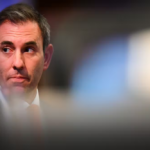Renewable energy as stimulus

Investing in renewable energy as a stimulus package: aligning the need for emission reduction with employment and industry growth.
Investing in renewable energy as a stimulus package: aligning the need for emission reduction with employment and industry growth
In April this year I will be presenting a keynote at the "Skilling the Future of Australia" conference in Sydney. My topic is one that I have presented on many times, the development of green jobs and green industries. As you can imagine I have researched everything from the Green Jobs Act in the United States (see a soon to be published blog), through to President Obama’s green industry and climate change policy. I have read the Garnaut report more times than the average scientist or activist and have spoken to academics and activists the region over. So, for my first blog in this series I wanted to look at a tale of two countries and how some simple ideas and policy frameworks can establish green industries, the path to green jobs and the economic growth that comes with it:
Think for a moment about this: the World’s third largest oil producer, pumping out more than 2.4 billion barrels a day, sits on the world’s fourth largest gas reserves, or six trillion metres. According to a World Wildlife Fund report this same producer has the world’s largest ecological footprint and, therefore, consumes more natural resources per capita than any other country. The place is the United Arab Emirates and, more specifically, the tiny Emirate of Abu Dhabi. As Oil crept towards $150 per barrel, the Emirate was literally swimming in cash and, more importantly, they, along with other OPEC nations can always reduce supply to maintain prices. So, money is not the issue. Even though the price of oil has now fallen below $50 per barrel, this tiny little nation has embarked on one of the largest green industry construction projects in the world, a little more about that in a moment. The population of the United Arab Emirates is 4,621,399 (2006 Census) and the population of Abu Dhabi 945,267.
By comparison, Australia is the largest exporter of coal in the world. In 2006-7 Black Coal was Australia’s largest export worth approximately $22.5 Billion. As a whole the Coal industry in Australia is estimated to generate more than $60 billion this financial year. According to ABARE production has increased from 258.2 (MT) in 2000-1 to 298.4 (MT) in 2004-5. Australia has the world’s fourth largest black coal resource and the second largest reserve of brown coal. As a response to the climate change challenge, the Australian Government has committed $500 million towards clean coal technologies and a further $100 million towards a global institute to identify and develop ways of capturing and storing carbon. In a speech to the 3rd International Solar Energy Society Conference the Australian Environment Minister, Peter Garrett AM MP, made the following statement: A key part of our commitment to a ‘Solar Australia’, more than 12 months ago, was that we would aim to double the approximately 30,000 solar rooftops around Australia within eight years. The population of Australia is 21,468,700.
 While it is hard to compare apples with apples in the case of the UAE and Australia some things are inescapable. Firstly, both countries have access to large reserves of fossil fuels whether they are gas, coal or oil. Some in Government and the Australian coal industry would argue this is a large bow to draw – but the one thing that is inescapable is sunlight. Both countries have ample amounts of it and both countries have it in supply. The difference is what Abu Dhabi has decided to do with that sunlight, and given the Australian Government will be embarking on massive infrastructure projects, the example of Abu Dhabi should stand out for a few significant reasons:
While it is hard to compare apples with apples in the case of the UAE and Australia some things are inescapable. Firstly, both countries have access to large reserves of fossil fuels whether they are gas, coal or oil. Some in Government and the Australian coal industry would argue this is a large bow to draw – but the one thing that is inescapable is sunlight. Both countries have ample amounts of it and both countries have it in supply. The difference is what Abu Dhabi has decided to do with that sunlight, and given the Australian Government will be embarking on massive infrastructure projects, the example of Abu Dhabi should stand out for a few significant reasons:
- Job creation
- Local economic growth
- Leadership in the world environmental and climate change debate
- Preparing for a time when the fossil fuel runs out
- Lowering carbon emissions
Abu Dhabi is in the middle of constructing Masdar City at a cost of $22 billion. When completed it will be the world’s first city to have zero emissions. Masdar, in Arabic means the "source" and the initiative was established by Sheikh Mohammed bin Zayed Al Nahyan, the Crown Prince of Abu Dhabi. Aside from a massive construction project and development of a new city, the program also seeks to establish the UAE as a leader on the world stage when it comes to climate change and carbon management. There is a commitment to the establishment of a post graduate research institute, investment in sustainable technologies (for use at home and for export) and the development of a carbon management unit. Powering this city in the sun will be a massive network of solar panels feeding into a series of solar plants. Just over 80% of the water will be recycled and the city will be resident to more than 40,000 people with 50,000 people commuting daily for work or study. Importantly this new city currently employs thousands of construction workers, professionals, engineers, tradesmen in addition to a large contingent workforce.
Abu Dhabi and the UAE have essentially begun doing what Australia wants to do – but what could Australia do?
1. Job creation 2. Local Economic Growth 3. Leadership in the world environmental and climate change debate: not only do we have an opportunity to create and develop Green industries and jobs off the back of infrastructure projects, Australia can use the development of these new industries to invest specifically in jobs and employment growth during the economic downturn. This in turns stimulates local and domestic economic growth. For example, the UAE has invested $600 million in a new solar panel manufacturing plant in Germany. Australia is a world leader in solar technology so not only could we work in partnership with the UAW on opening a plant in this country, we could use it as an opportunity to boost jobs, build green industries, service local carbon reduction requirements and be a world leader in the climate change challenge. In addition, building and investing in high tech green technology manufacturing clusters in the same way we have previously invested in biotech and information technology companies. Clusters could be centred in every major capital city connected by a central research and development institute encompassing aspects of the CSIRO and the Co-operative Research Centres. Further jobs growth could be created in our Academic arena through the development of a Green Technology Research Institution -working with industry. Moreover, the reformation of our education system to prepare the next generation for green industries and green jobs – what roles and jobs will be needed to support the industry and how can we add unit standards on the environment and climate to current academic programs – again, working with industry and academia to do this.
4. Preparing for a time when the fossil fuel runs out: there is a place for coal and the reality is the industry employs tens of thousands of Australians. However, Australia still needs to prepare for a time when our fossil fuels run out, when there is no more coal or, as has been mooted in a number of forums, the outlawing of coal or the addition of coal specific taxes that could turn the industry into an unviable sector. Either way, addressing the challenge of climate change is not about preparing a plan for a time without fossil fuels, but it should be an aligned challenge. It is one thing to want to reduce our carbon emissions it is another thing to plan for a complete energy revolution. We shouldn’t wait for the technology or the science to be developed in other countries; we should be leading the fields of green science and technology.
5. Lowering carbon emissions: any which way you look at it, an investment in green technologies such as solar, wind and geothermal power will see emissions reduced. That said, we as individuals are one of the largest groups of emitters through our daily tasks – whether it is driving the car to work or having five plasma televisions in every room of the house we all have a responsibility to reduce our own footprints.
So here we are. The UAE have moved down the path of sustainability, investment in green industries and technologies, new jobs growth and leadership. Australia has an opportunity to move ahead of the UAE and there is no time like the present to do it. One thing is for sure, the Australian Government is committed to the climate change challenge – the question is whether or not we can take advantage the opportunity affords by planning for the future, creating our green industries, leading the development of green technologies and creating jobs – the UAE have certainly provided the roadmap. As for economic stimulus, well that doesn’t take a rocket scientist now does it?
- Production statistics were obtained from the Australian Coal Associations website & the Australian Bureau of Statistics
- A full copy of the speech made by the Hon Peter Garrett AM MP to the 3rd International Solar Energy Conference
- Take a look for yourself: what is Masdar City all about
______________________________________
Matthew Tukaki is Director of SansGov and leads the organizations government policy, advisory and services practice. Matthew is the former General Manager of Education at IT&T Education, former Head of the review into Knowledge and Information Management Strategies at both the Joint House Department of the Parliament of Australia and the Australian Communications Authority, former Head of Government, Knowledge Management and Education at Dattatech Samsung SDS and former Chairman of both the National Skills for Schools program and the Government Policy Advisory Panel.












sally.rose
February 3, 2009 at 3:23 am
Economically responsible doesn’t mean no vision allowed
It's serendiptous that your blog follows John Hewson's posting from yesterday. He spoke about the need to challenge the starting premise that reducing carbon emmissions will neccessarily have a negative impact on the economy – and here you, (rightly I think) that we can attack climate change and stimulate the economy at the same time.
"Economically responsible" is a term that litters the introduction to the Garnaut report, and I think many people have interpreted this in very narrow terms and confining terms.
An irony of carbon emmissions has always been that the people who talk about it the most (rich people in developed nations) are the biggest emitters, whilst the people with the smallest footrprints (poor people in developing nations) have no concern with it. I wonder if this has compounded our mass fear that to reduce carbon emmissions we'll have to give stuff up?
But it is possible we can reduce emmissions and upgrade to better stuff? Better jobs, better cars, better technology, better society? That would be cool.